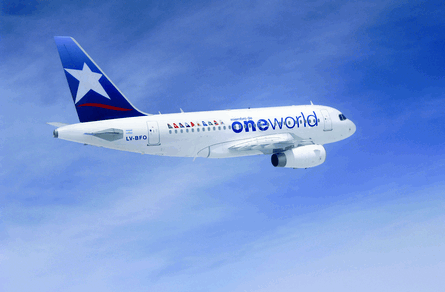Latin carriers continued to benefit from the region's strong economy last year, and there was plenty of action in Brazil as Gol struggled to bring its acquisition of Varig under control
Latin America is the region "where the action is", according to Bobby Booth, chairman of Miami-based AvGroup.
"Even the US majors like American and Continental make money in Latin America, due to yields as high as 14 cents," he adds. As for Latin American carriers, the four publicly traded model airlines - LAN, Copa, TAM, and GOL - are doing well because of the region's strong economy. Demand is growing in double digits, says Booth, and regional markets "are growing exponentially as more Latin Americans discover air versus ground transportation".
 |
|---|
This year's rankings show that Latin American carriers collectively posted a net profit of $488 million and an operating profit of $726 million in 2007, on revenues which rose almost 20% to just under $19 billion. This failed to match the 2006 net and operating profits for the region, which reached $898 million and $1.3 billion respectively, but did not prevent 10 Latin carriers from making it into our top 150 airlines ranked by revenue.
Brazil has been one of the more turbulent nations in the region, with an air traffic crisis in 2006-07 that was marked by crashes that cost 350 lives. This crisis also pushed the nation's third largest airline, BRA Transportes Aereos, out of business last November. BRA had been a potential challenger to TAM and GOL with nearly 5% of the market.
Meanwhile, GOL has suffered since the spring 2007 takeover of Varig, one of the region's oldest names. GOL bought the Brazilian flag carrier's name and routes in March 2007 for $320 million.
In the first quarter alone, GOL's losses were entirely at Varig, says Raymond James analyst Jim Parker. Though GOL itself is highly profitable, Varig has eaten up resources as the parent strives to get its acquisition under control. It has moved to end all of Varig's international routes, essentially yielding the overseas markets to TAM. This comes as the USA and Brazil sign a new bilateral treaty that will increase traffic between the two countries. TAM has gained 75% of the international market, signed bilateral deals with Star Alliance members TAP and Air Canada and may be moving towards alliance membership, says Booth.
Elsewhere, Colombia's Avianca is doing well despite increased competition from Copa subsidiary AeroRepublica. Avianca has just acquired a major cargo hauler, Tampa Air Cargo, and will attempt to use air freight to balance out passenger seasonality.
At 11%, Copa's margins pass those of Delta as regional currencies appreciate against the US dollar, says JP Morgan's Jamie Baker.
Source: Airline Business























